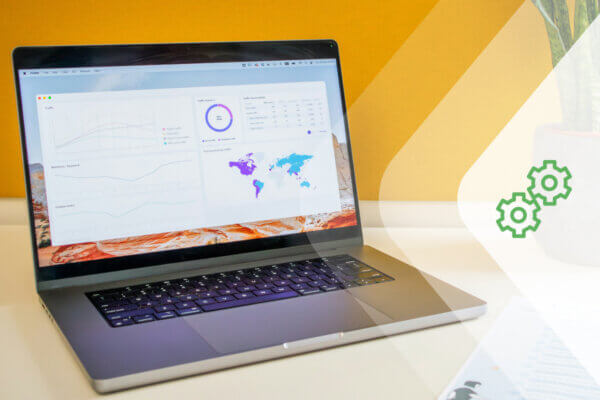
Janet Martin
Janet joined the PairSoft team upon its merger with Paramount Workplace, where she was also an integral part of the sales team for years. Janet resides in Michigan with her family.
View all posts by Janet MartinJanet Martin • April 10, 2025

In this piece, we will delve into the top 10 reasons to automate eInvoicing in Oracle ERP. Whether you’re a finance leader or an IT decision-maker, understanding these reasons may help you modernize operations and ensure compliance with evolving global regulations.
Staying compliant in today’s fast-paced regulatory landscape is akin to balancing on a tightrope. Automated eInvoicing provides a safety net. For instance, as mandates like Poland’s KSeF and Italy’s SDI become the norm, businesses leveraging automation can ensure that each invoice adheres to local regulations.
Understanding local regulations is crucial here. A breakdown of country-specific requirements isn’t just useful; it’s essential for risk management. Think of eInvoicing as your compliance insurance policy—a safeguard against hefty penalties for non-adherence.
Efficiency isn’t just a buzzword; it directly impacts cash flow. Manual approval processes can create bottlenecks, threatening to delay payments and straining vendor relationships. Automating your eInvoicing speeds up these cycles, transforming a cumbersome process into a streamlined operation.
Statistics show that companies report a substantial reduction in invoice processing times post-automation. Adopting these systems can mean quicker turnaround which translates directly into better vendor rapport and improved cash management.
If there’s one thing we’ve learned through years of accounting, it’s that human error is always lurking. An inaccuracy in a manual invoice could lead to financial discrepancies, payment delays, or worse, regulatory issues. Automating distinctly minimizes these risks.
Consider a scenario: a finance team member accidentally misplaces a decimal. That minor slip could affect a significant transaction. In contrast, automated systems maintain precision and consistency. Companies that implemented automated invoicing report noteworthy reductions in error rates, allowing staff to focus on deeper analysis rather than corrections.
Think of eInvoicing as the glue holding various departments together. When finance, procurement, and compliance teams operate in silos, inefficiencies are bound to crop up. Automation fosters cross-departmental collaboration, leading to better resource allocation and faster response times.
Visualize this: a new invoice arrives and immediately is routed to the appropriate department for approval. No more back-and-forth emails. Integrating eInvoicing systems helps create a fluid workflow, significantly enhancing operational efficiency.
Timeliness is critical in finance, especially when it pertains to vendors. Automated invoicing ensures that payments are processed promptly, fostering stronger relationships with suppliers. A satisfied vendor is more likely to provide better terms or prioritize your orders.
Consider how many times frustrations arise from delayed payments. These situations can cause lasting damage to supplier relationships. With automation, the benefits of timely, accurate invoicing shine through, reinforcing trust and collaboration.
If there’s anything every finance leader loves, it’s a clear picture of cost savings. Moving to automated invoicing systems can yield significant financial benefits. Think about it: reducing paper usage, minimizing manual labor, and cutting operational costs add up quickly.
Several companies have documented substantial savings after transitioning to automation. These aren’t just theoretical figures—real businesses have seen their efficiency and profitability skyrocket.
Data is king, and automation can unlock its full potential. With manual processes, data collection can be cumbersome, limiting insights when it comes to analysis. Automated eInvoicing not only streamlines data collection, but it also enhances reporting capabilities.
Imagine having a dashboard that visually displays all your invoices, processing times, and compliance statuses at a glance. This visibility can empower decision-makers to strategize effectively, leading to informed choices rooted in solid data.
The landscape of transactions is evolving rapidly, and so are payment technologies. The synergy between eInvoicing and global payments software enables seamless international transactions. With a connected financial operations stack, businesses can improve both compliance and supplier relationships.
The cross-functionality reduces risks associated with international payments, tackling issues like currency conversion and taxation with ease. A well-integrated system means less friction in financial operations and an overall smoother transactional experience.
Growth often brings complexity. Companies expanding into new markets need solutions that can scale with them. Automated eInvoicing systems evolve alongside your business needs, ensuring compliance without the hassle of manual adjustments.
Businesses that leverage automated solutions report a smoother transition when scaling operations. The adaptability of these systems makes them an essential part of a growth-oriented strategy.
In a marketplace crowded with competitors, standing out requires strategic advantages. By adopting automated eInvoicing systems, companies not only improve their internal operations but also position themselves as forward-thinking leaders in their industry.
Automation can serve as a badge of honor—a sign that you are committed to efficiency and innovation. With a competitive edge, your organization is poised to seize new opportunities and maintain market leadership.
As we’ve explored, the importance of automating eInvoicing within Oracle ERP systems cannot be overstated. From enhancing compliance to driving efficiency across operations, automation paves the way for businesses to navigate the complexities of global finance successfully.
For finance leaders and IT decision-makers, the transition to automated eInvoicing isn’t just a trend; it’s a strategic necessity. Staying updated on emerging regulations and best practices—while embracing automation—will not only secure your compliance but will also position your organization for success in a rapidly changing landscape.
In today’s world, embracing automation is more than just a choice—it’s an investment in your future. So, take the plunge and automate your eInvoicing in Oracle. The returns could be far greater than you expect.

